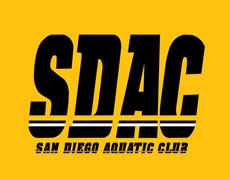General Team Structure
SDAC is a progressive age group program designed to develop the child physically, mentally and emotionally in a systematic fashion. A well-defined, long-term approach of gradually increasing degrees of commitment is essential to reach peak performance levels during a swimmer’s physiological prime. The emphasis in the early stages of participation must be placed on developing technical skills and a love for the sport. In the later years, a more demanding physical and psychological challenge will be introduced to the training program. In this respect, “too much too soon” is more often the cause of failure to achieve maximum potential in senior swimming than in the reverse situation.
In addition to emphasizing long-term rather than short-term results, it is also important that we establish training groups of swimmers who are compatible in respect to abilities, commitment levels and goals. Unfortunately, this is not always the most convenient approach to take, but it is always the most productive. At each level, the goals and objectives are specific and directed toward meeting the needs of the swimmer. The long term goal of individual excellence is always in mind. As each child is different, he/she will progress at his/her own rate. The coaching staff recognizes this fact by making team assignments based on a swimmer’s physical, mental, and emotional level of development.
The progressions will be used to enhance our coaching by setting specific standards on what an athlete will need to accomplish at different levels to reach his or her potential. Swimmers are multidimensional and develop at different rates; sometimes they excel in some areas faster than in others. There will be six areas of development emphasized:
- Training requirements
- Competitive performance
- Biomechanical progressions
- Physiological progressions
- Psychological skills
- Character Development and Life Skills
Listed next are examples of how the Progressions for Athlete Development will be used:
- We may take a topic from an area of development, and hold a series of team meetings around the topics. These meetings may be for the athletes and/or their parents.
- Focus on the career development of an athlete, so that his or her long-term development is emphasized.
- Emphasize the six areas of development so that the swimmers must think about more than just swimming fast. This multidimensional focus helps
- Develop a well-rounded athlete.
- Teach swimmers different aspects of the biomechanical and physiological areas to get them to also focus on technique, stroke count, distance per stroke, heart rate, etc.




